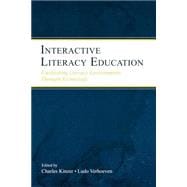
| Introduction: Facilitating Literacy Education Through Technology | p. 1 |
| Intelligent Tutoring Systems | p. 13 |
| A Multiagent Perspective on Literacy Learning Environments | p. 15 |
| Learning to Read With a Virtual Tutor: Foundations to Literacy | p. 31 |
| ICT Support in Kindergarten for Children At Risk | p. 77 |
| Speech Recognition to Support Early Literacy | p. 95 |
| Experience From a Reading Tutor That Listens: Evaluation Purposes, Excuses, and Methods | p. 117 |
| Multiagent-Based Computer Support for Children With Reading Disabilities | p. 149 |
| Interactive Literacy Environments | p. 167 |
| Designing Kindergarten Classroom Computer Center Literacy Activities: A Theoretical Approach | p. 169 |
| From Mental Models to Lexicons: The Case of Early Literacy Software | p. 191 |
| Computer Support in (Hi)Story Construction: Using Technology to Scaffold Student Understanding | p. 217 |
| How Computers Can Help Children Think Together About Texts | p. 245 |
| Examining a National, Online Community in Case-Based Preservice Education | p. 269 |
| Supporting Preservice Teacher Education Through a Multimedia, Case-Based Online Learning Environment | p. 285 |
| Author Index | p. 309 |
| Subject Index | p. 317 |
| Table of Contents provided by Ingram. All Rights Reserved. |
The New copy of this book will include any supplemental materials advertised. Please check the title of the book to determine if it should include any access cards, study guides, lab manuals, CDs, etc.
The Used, Rental and eBook copies of this book are not guaranteed to include any supplemental materials. Typically, only the book itself is included. This is true even if the title states it includes any access cards, study guides, lab manuals, CDs, etc.